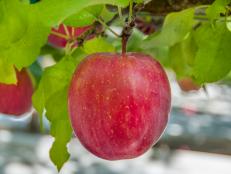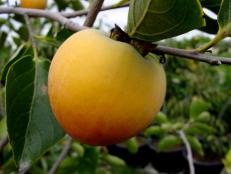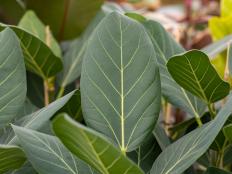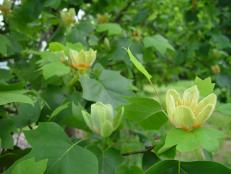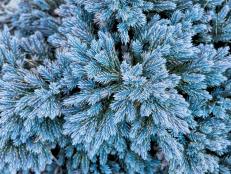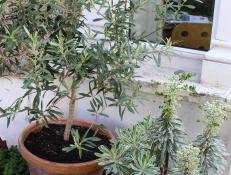Growing Apples
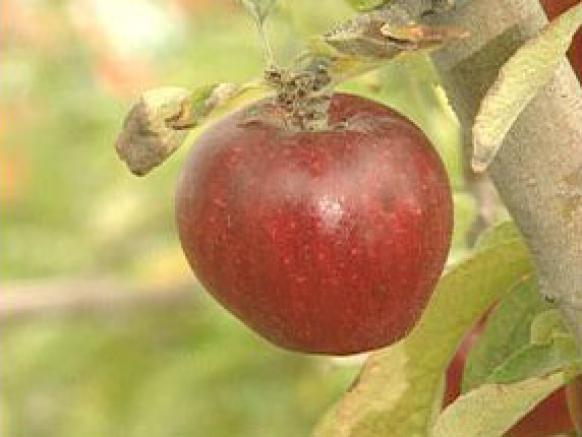
Americans have a long-standing love affair with apples. We eat more apples than any other fruit — on average, about 18 pounds per person a year. We buy more of them at the grocery store than any other produce, and we grow more of them than any other country. So you just might say that these beauties are the apple of our eye.
"I think it's an amazing act of God that you can start with a dormant bud and in a very short time get a beautiful white or pink flower," says apple expert Alan Merritt. "And then four months later have something that is as beautiful as an apple, wrapped in its own package — all you have to do is eat it."

Growing apples takes a certain commitment for home growers, says Merritt. You need to know what will grow in your area and equally important, what will ripen. Many apple varieties can be grown farther north than other fruit trees because the blooms usually survive frost, but it takes heat to ripen the fruit. Just how much heat is a good question for a nurseryman or cooperative extension agent in your area. "Certainly the climate is a consideration," says Merritt. "The variety is a consideration as well as the root stalk, but you also need to consider water and the tree structure."
Another consideration when growing apple trees is the size you want the tree to be at maturity. This five-year-old dwarf Johnny Gold has a few more years before it reaches its full grown, seven-foot height, but it's already producing a sizable and easily harvested crop.
Apple trees of this size are very easy to manage. "They become a pedestrian orchard. You don't need a ladder to deal with it."

This five-year-old semi-dwarf Johnny Gold was planted at the same time as the previous tree, but the next-size-larger-root-stalk is already nine feet tall. Merritt estimates it will grow to 12 or 13 feet at maturity, but some semi-dwarfs grow as high as 30 feet.
In a home setting, less is usually more, unless you're talking about bees, he says. "When the trees flower in the springtime, the pollen is viable for only a few hours, depending on the temperature. So it's very important that you have two types of flowers available for the bees to cross-pollinate."
To get a crop of apples, bees must gather the pollen from one variety and deposit it on the blossom of another variety. Merritt grows crabapples on the property throughout the orchard because they flower heavily for maximum cross pollination. If having two apple trees is not an option, one space-saving solution is to consolidate; the easy way is to graft two or three kinds of apples onto one tree.
Whether you're planting a grafted tree or not, getting all those apples to ripen into sweet succulent snacks requires a little help from the heavens. Sunlight is vital for developing rich colors and natural sugars, but sometimes the growth of the tree inhibits that process.

Vertical shoots block penetration of light into the tree. Merritt recommends keeping fruit on short side limbs, so they have light in order to mature. Most major pruning on apple trees occurs in winter's dormancy when the leaves have fallen, but come summertime, he does a little tidying up to let the sunshine in.
- Wrap a few vertical shoots around a branch, or use your hands to pull the shoots off. Merritt prefers manual ripping because the cuts heal faster than the straight loppers' cut.
- Keep the base of the tree clean of debris and grass. Merritt suggests the dormant season for this job, and while you're at it, just snip off siphoning suckers. "These are root suckers that come up from the root stalk," says Merritt. "They take away a lot of the vigor from the tree, and they also create a habitat for critters. They also can create some disease problems."
- Spray during the growing season. Fungal diseases, scab and pest infestation can all be controlled with organic methods, or you may want to look into growing newer, low-maintenance trees that are disease-resistant.
You don't want the fruit to bruise, so to harvest, a gentle tug is all you need. When stored correctly, apples stay fresh for a good, long time. "It's very important to keep high humidity storage, and refrigerators have very low humidity, so they suck the juice out and the apple becomes like rubber," says Merritt. "So if you put them in a plastic bag and maybe punch a hole or two in it so there's a little air flow, but keep the moisture in the bag, you can store apples for months and months."






